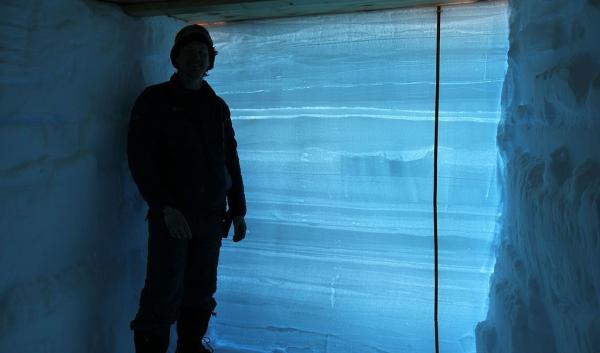Reading time: 4 minutes
The National Oceanic and Atmospheric Administration’s (NOAA) Climate Prediction Center is forecasting a weak La Niña event for winter 2024-25. Weather patterns throughout Alaska, Idaho, Oregon, and Washington are affected by La Niña, particularly during the winter season.

What is La Niña?
La Niña is the naturally occurring cool phase of the El Niño-Southern Oscillation (ENSO), a climate pattern in the Pacific Ocean. It is marked by cooler-than-average sea surface temperatures in the eastern and central Pacific Ocean near the equator. On average, La Niña occurs every three to five years and can last from a few months to a year. The likelihood of La Niña occurring over two consecutive winters is much higher than the likelihood of back-to-back El Niño winters (the warm phase of ENSO), and it has happened often in the historical record. On rare occasions, La Nina can persist for several years, such as the recent “triple-dip” La Niña from 2020 to 2023.
During La Niña, the trade winds that blow east to west over the tropical Pacific Ocean grow stronger than usual, pushing warm water toward Asia. Along the western coasts of North and South America, excess upwelling causes colder, nutrient-rich water to rise to the surface. Cold Pacific waters lead to clusters of thunderstorms tending to be more restricted to the western part of the tropical Pacific, ultimately causing the jet stream over the Northeast Pacific Ocean to shift northward. This shift affects weather patterns throughout North America. In a La Niña winter, Idaho, Oregon, Washington, and most of Alaska typically record cooler than average temperatures. Some La Niña events also bring above normal precipitation to the region, but the association is not as strong as for temperature. La Niña events bring contrasting changes to the southern US, which tends to see warmer than average temperatures and reduced precipitation. La Niña can also increase the severity of the Atlantic hurricane season through its impacts on upper-level winds in that region.
How does La Niña affect the Northwest?
In the Northwest, the effects of La Niña show up mostly in the winter when the jet stream is strongest. In Idaho, Oregon, Washington, and most of Alaska, winter is usually cooler during La Niña events and conditions can be wetter than normal. However, southcentral and southeast Alaska can experience drier winters. Though La Niña increases the chance of these conditions, many other factors affect weather and climate in the Northwest, so the typical effects are not a certainty.

In the Northwest, a wetter, cooler winter can result in more precipitation overall and more precipitation falling as snow. As a testament to these effects, several ski resorts in the Northwest registered record snowfall during the La Niña winter of 1998–1999. Significantly, Mount Baker ski area in Washington set a new world record for the highest annual snowfall ever recorded with over 95 feet of snow. A deeper snowpack can have positive implications for spring and summer conditions, and can lead to increased runoff, more reliable summer water availability, and reduced drought severity, even in years with warmer, drier springs and summers.
La Niña can also have a variety of effects on salmon and other aquatic species in the Northwest. In Idaho, Oregon, and Washington, more snowmelt and runoff during La Niña can benefit freshwater habitats and lead to healthier salmon fisheries. The growth and survival of juvenile salmon and steelhead can also be improved by La Niña's association with cooler, nutrient rich ocean water along the coast of Oregon and Washington, which can benefit sea birds and marine mammals as well. On the other hand, in southcentral and southeast Alaska, cooler temperatures and reduced precipitation can reduce streamflows and shorten the amount of time that salmon can spend in freshwater habitat.
Though some of these effects can be beneficial to agriculture, fisheries, forests, and rangelands, La Niña can also exacerbate extreme precipitation events, flooding, landslides, and streambed scour (which negatively affects incubating salmon). During the 2022–23 La Niña, some moderate to high flood events affected Washington and Oregon, including one flood in 2022 that inundated roads, homes, and businesses in Issaquah, Washington.
How can climate change interact with La Niña?
Climate change is leading to rising air and ocean temperatures and changing precipitation patterns throughout the Northwest. Rising air temperatures are causing more precipitation to fall as rain rather than snow. Though the interaction between climate change and La Niña is not completely understood, the cooler temperatures that accompany La Niña could temporarily reduce the warming effects of climate change and cause more precipitation to fall as snow. Nevertheless, the La Niña events of today are trending warmer, reflecting overall increases in annual average ocean and air temperatures. As La Niña events warm, future events could record lower snowfall and more rainfall in the Northwest.
It is uncertain how climate change will impact the ENSO cycle itself. The global climate models used to make projections are inconsistent about the tendency for El Niño versus La Niña, and for the strength of the ENSO cycle. Time will tell how this winter’s La Niña (assuming such conditions occur) will affect the Northwest. Cooler-than-normal temperatures are presently indicated for Idaho, Oregon, Washington, and most of Alaska, and possibly wetter conditions too. In contrast, southcentral and southeast Alaska can expect a cooler, drier winter. Regardless of the effects of climate change on the ENSO cycle, increases in temperature and changes in the seasonal timing of precipitation and runoff are likely to manifest in future climate and weather patterns in the Northwest.




